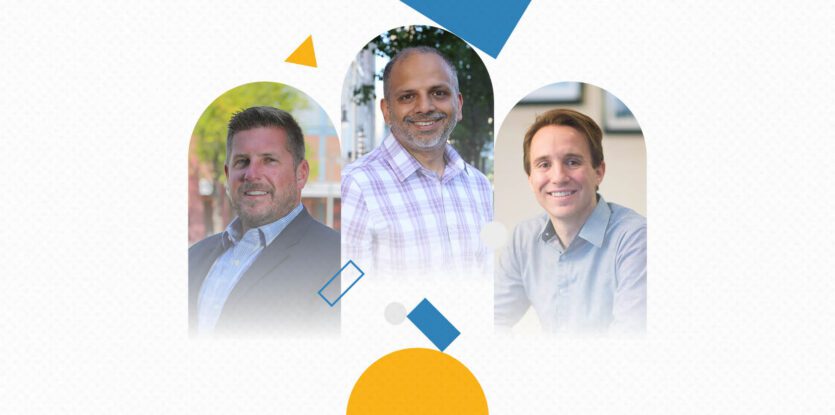In part one of our blog series, we introduced ChatGPT and language learning models and touched on how this technology could transform workplaces as we know them. Today, we’re diving more deeply into the ChatGPT use cases in the creative sphere to explore how AI is revolutionizing creative processes in the workplace, leading to exciting new possibilities and applications.
Creativity and innovation are essential for staying ahead of the competition in today's fast-paced business world. Artificial intelligence (AI), particularly ChatGPT, is transforming how workplaces approach creativity and problem-solving by augmenting human imagination.
The Evolution of AI in Creative Fields: Use Cases for ChatGPT
The origins of AI in creative fields date back to simple rule-based systems that generated basic patterns and designs. For instance, in the 1960s, computer scientist Michael Noll programmed a digital computer at Bell Labs to create abstract geometrical patterns using mathematical algorithms. This early exploration of AI in art marked the beginning of computer-generated creativity. Over time, AI has advanced to include more sophisticated generative models, like ChatGPT, capable of producing complex, human-like outputs. One such example is the development of Google’s DeepDream in 2015. This AI program uses deep learning algorithms to generate dream-like, psychedelic images from existing photographs. This technology demonstrated the potential of AI to create visually striking and unique content, far surpassing the capabilities of earlier rule-based systems. More recently, the AI research company OpenAI unveiled GPT-2, a language model that could generate coherent and contextually relevant text. OpenAI refined it, eventually releasing ChatGPT 3.5 and ChatGPT 4.0 (released in March 2023 to paid subscribers), which are even more sophisticated and capable of understanding and generating human-like text. As a result of these advancements, we have witnessed a shift from people perceiving AI as merely a tool to AI becoming a creative collaborator in business. For example, the marketing platform Persado uses AI-generated language to craft more effective marketing messages for its clients. Companies like IBM have also introduced AI-driven tool suites, like IBM Watson. These real-world examples highlight the progression of AI in creative fields, from its early beginnings in basic pattern generation to its current role as a creative collaborator across various industries. Next, we’ll look at how people and AI can work together to enhance creative thinking in the workplace.The Symbiotic Relationship Between Humans and AI in Creativity
Human-AI collaboration is critical for success in creative endeavors within the business world. We should view AI as an extension of human creativity rather than a replacement. While there are concerns about AI’s impact on creative jobs and human originality, the symbiotic relationship between humans and AI can lead to more efficient and innovative outcomes, ultimately driving growth. For instance, in the marketing industry, teams can use AI to analyze vast amounts of data to identify consumer trends and preferences, while human marketers can interpret these insights and craft emotionally resonant campaigns for their target audiences. This synergy leads to more effective marketing strategies and improved business outcomes. However, there are concerns about AI’s impact on creative jobs and human originality. As AI becomes increasingly sophisticated, some fear it may outperform humans in certain creative tasks or even replace them entirely. Yet, the most successful creative endeavors capitalize on the cooperative relationship between humans and AI. Rather than competing with human creativity, AI can enhance it by offering unique perspectives and data-driven insights. For example, AI-generated content can serve as a starting point for human creators, who can then refine and tailor the content to their specific needs, incorporating their unique creative vision. This collaborative approach can lead to more efficient and innovative outcomes, ultimately driving growth. To foster a successful human-AI collaboration, organizations should focus on developing a culture that embraces AI as a valuable partner in the creative process. This includes providing training and resources for employees to effectively work alongside AI systems and encouraging open dialogue about the potential benefits and challenges of AI integration.The Power of ChatGPT in Business
ChatGPT is pushing the boundaries of AI-enhanced creativity across various domains, including marketing, product development and design. For example, there are various marketing ChatGPT use cases such as generating engaging ad copy, social media content and even product names. Product developers employ AI to brainstorm new product ideas and explore innovative features, while designers leverage AI to discover new styles and patterns for product design. As an LLM, ChatGPT works well in several key problem areas related to language processing and automation. Here are some ChatGPT use case examples:- Creative content generation: ChatGPT can create content, such as product descriptions, social media posts and marketing copy.
- Text summarization: ChatGPT can summarize large volumes of text, making it easier for people to understand or extract insights.
- Language translation: ChatGPT can translate text from one language to another.
- Chatbots and customer service: ChatGPT can power chatbots and other conversational interfaces.
- Researching topics to gain understanding
- Gathering topics for a blog content plan
- Creating starting point marketing content
- Debugging and explaining code (not client owned)
- Asking questions and using it as a brainstorming aid.
Practical Tips for Integrating ChatGPT into Your Creative Processes
Workplaces can benefit from incorporating ChatGPT (or another AI tool) into their creative processes by following these practical tips:- Combine human and AI-generated content: Identify your audience, who you are, what you want to create, and an outline of points you want to make. Use this information of human-generated creativity and join it with AI capabilities to create unique and engaging content. You can create entire blogs, emails, proposals and PowerPoint decks in this fashion through various providers.
- Leverage AI for data-driven insights: Use AI to analyze large datasets to identify trends and patterns that can inspire new products, services or marketing strategies.
- Embrace AI as a brainstorming partner: Use ChatGPT to generate a variety of ideas from which your team can choose, refine and expand upon.
- Use AI for rapid prototyping: Employ AI to quickly generate mockups, designs or content drafts, allowing your team to iterate faster.
- Establish a feedback loop: Continually provide feedback to AI systems to improve their output and align them with your goals. This means asking tools to criticize and react to the output they created or for you to provide a reaction to the output generated.
- Use AI to summarize meetings: Use tools like ChatGPT to summarize transcripts of your meetings and help you identify action items. For busy executives who are often double-booked, this process can boil a meeting down to its salient points and thereby eliminate the fear of missing out on meetings.












